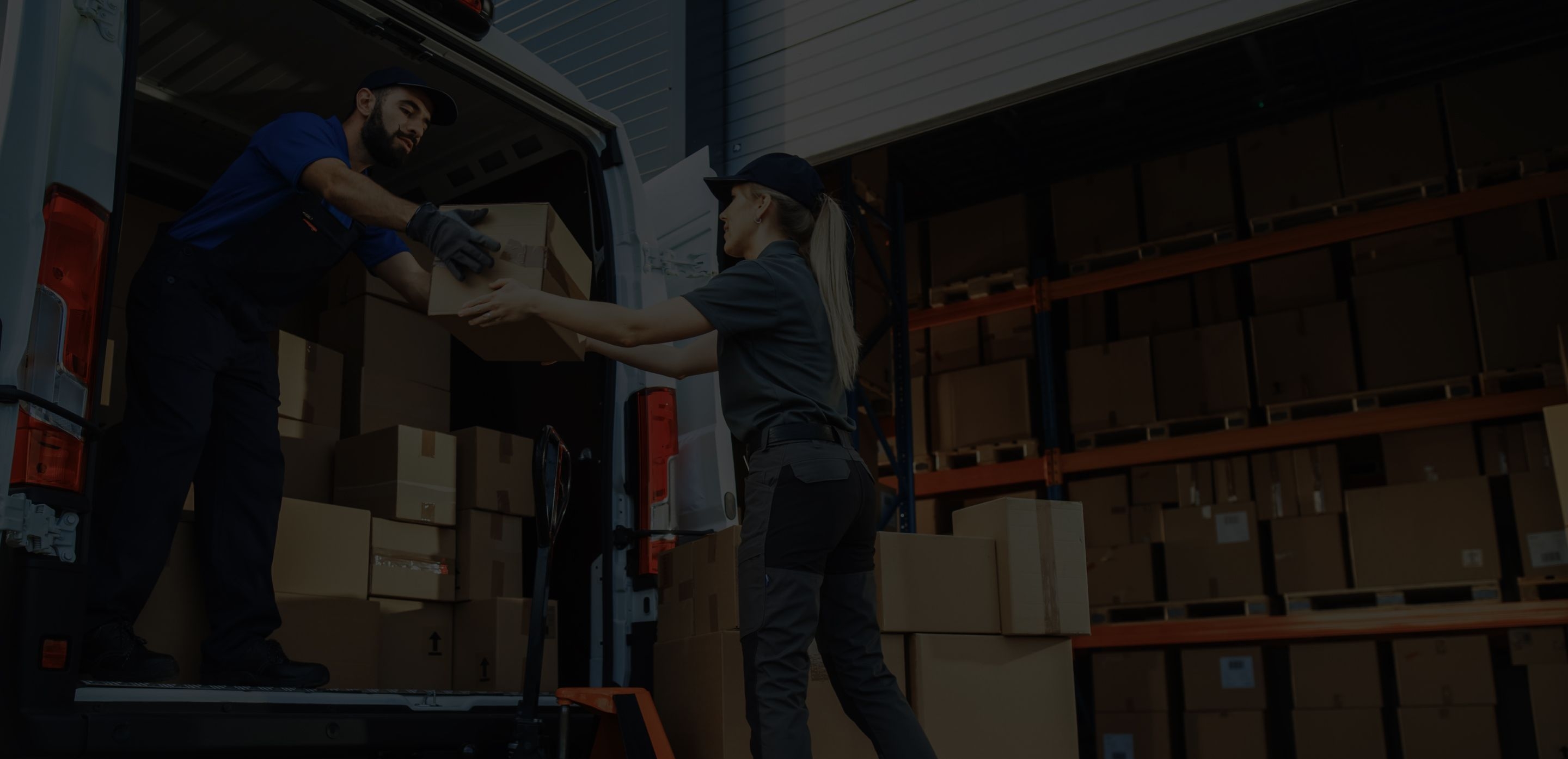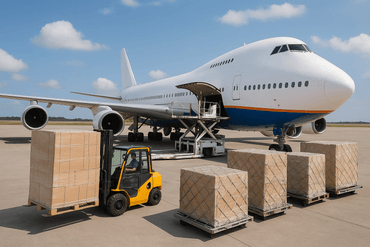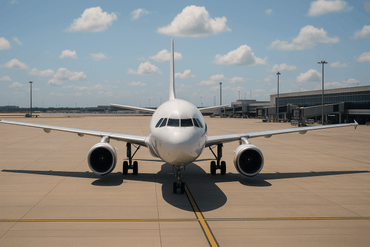
Top 9 delivery and pickup problems in the US



Whether or not you’re familiar to ocean freight, there’s one thing you probably know for sure: The industry is a complex one and given that, it’s common for problems to arise in this convoluted world of logistics. You can plan and plan and still miss a field in the paperwork or make an error. Even if you plan to perfection, you may have something go wrong anyway for reasons beyond your control. It’s always best to prepare yourself for any hiccups that could happen along the way.
Here’s a list of the top 9 delivery and pickup problems you can face in the US.
Top 9 delivery and pickup problems in the US
1. Damage to cargo
Any seafarer will tell you that conditions at sea aren’t always smooth. Mother Nature is beautiful at times but she also has a wrath that you wouldn’t want to test. At least 95% of cargo damage is caused by improper packing and/or stowage. Knowing the basics of loading a container is important. Factors such as how many pallets fit in your container could be the main factor in container security.
Cargo damage as a result of carrier or terminal mishandling is quite rare. But in the event of this, make sure to file an insurance claim. It’s also advisable to do this following the right procedures and through the proper channels. That way, you have a higher chance at compensation. It’s better to be safe than sorry. Secure your cargo properly to prevent any hiccups.
2. Incomplete paperwork
Paperwork is probably synonymous to shipping. And losing or misplacing one is unusually common. That said, if you were to have only one document in hand every step of the shipping process, it has to be the original Bill of Lading.This piece of document makes or breaks the pickup of your merchandise. Without it, expect to have problems with releasing your shipment, which then results in delays and a huge logistical headache.
_Advice: Always courier your original Bill of Lading through a reliable channel. _You can choose to go with a Telex Release or Express Release, but only if you feel you can trust your supplier enough. It’s also important to note that depending on the cargo you’re shipping and the arrival port, you may be required to fill in extra paperwork.
Read more: Cargo insurance and sanctions
3. Custom problems
US customs are known to be one of the strictest in the world. Even though only a small fraction of all shipments (2% to 10%) are actually inspected, you should be prepared for the possibility of this. Keep in mind that any additional costs will be borne by you, the shipper. This could also result in unanticipated delays and delay costs a read to know what to avoid and how to prepare for an inspection, whether or not at random.
4. Delay costs
Customs check form only one of many reasons for delays, which inevitably leads to delay-related charges and fees. In shipping, the most common delay charges are demurrage, detention, and per diem. Make sure to familiarize yourself with them as they are not the same. That way, you can better negotiate with your shipping line or trucking company for more leeway.
5. Chassis issues
The chassis shortage problem has been around since shipping lines decided to stop supplying them for US shipments. This has resulted in congestion and delays at ports, and additional fees for shippers.
Picking up cargo at ports doesn’t usually pose a problem as ports have plenty of equipment. But it becomes a problem when shipments need to be transported via rail. This is especially so in landlocked states such as Arkansas and Kansas, and other less-accessible areas, where there’s a massive face shortage issue.
Also, keep in mind that not all terminals may have chassis available at all times. If you’ve arranged for a pickup from Dallas, there’s no guarantee that your selected carrier will have chassis available on the pickup date that you have indicated. Do a quick check of what carriers and chassis are available in the pickup area. Keep in mind that rates may change.
When you run this check, it would be a good idea to also make sure containers are available. Container shortage in some rail-linked terminals does occur. Certain ports also face equipment shortage from time to time.
Advice: Have a flexible sail date where possible. If you have an urgent shipment, you may have to change your pickup location. Speak to your freight forwarder to know your options.
6. Cutoffs: Earliest return date
The ERD, or Earliest Return Date is the first possible day you can load and transport the loaded container to the port.
If you have an inflexible or fixed loading date that falls before the ERD, the carrier may be able to offer empty containers at an earlier date. But you, as the shipper, may incur additional costs. These include redelivery fee (more on this later), chassis fee (per day), storage fee (per day), and the various delay fees.
For most carriers, you’re able to load your container three to four days before the cut-off date, which is usually one to two days before the sail date.
Here’s an example of cut-off dates from Maersk:
Always double check these dates with your freight forwarder as they may be subject to change without prior notification.
7. Weight limits (rail ramp)
It is extremely important to follow the container weight restrictions exactly when trucking. Transporting containers on the road is subject to road weight limits. Overweight trucks, even just by a single axle, may lead to fines, additional costs, rehandling and load redistribution. None of those sounds particularly pleasant.
Limits and restrictions include the tractor, chassis, container, and cargo. All of these elements can vary. A container may meet the restrictions for the allowance of total vehicle weight, but the truck may be overweight on an individual axle. The most common cause for this is uneven cargo distribution within the container.
In the US, road weight limits vary for each state. Make sure to check each state’s limits to avoid problems. Check out our post on road weight limits when shipping containers to know the different limits and how to deal with them.
8. Residential
**When you’re shipping because of an international move, there are certain factors to keep in mind. **This usually entails picking up your belongings in a residential area. Now, this may pose logistical difficulties for truckers. Given the presence of trees and narrow streets, it’s hard to navigate and arrive at the location. Parking could also be a problem.
If moving overseas, it’s best to inform your mover or freight forwarder in advance of your pickup address and its surroundings. You may be required to move your goods to a public storage area where it would be more spacious for truckers to arrive with no problems.
Keep in mind: Even if you move your belongings to a public storage area, you will still be charged for a residential move. Pick up costs are determined by the type of commodity, which in this case would be household goods.
9. Pre-pull/re-deliver
Depending on where and when you have your merchandise/belongings picked up, truckers may charge extra. Here are two concepts you need to be aware of.
Redeliver
Redeliver involves storing the container overnight at a facility in the event that the shipper was not able to finish loading everything in time. Typically, a trucker picks up an empty container and goes to the container loading point, be it a residential or business address. There, the driver will wait for as long as it takes for the shipper to load the container. Trucking companies normally offer two free loading hours. >But in some international moves, it could take longer, up to four or five hours. That said, after the first few hours, waiting time kicks in.
Depending on the location of the terminal, the trucker may need additional time to deliver the container back to the terminal. **Drivers have to adhere to the opening hours of the terminal. **They’re not open 24 hours. Some close at 3pm, some at 5pm. It varies. If the shipper takes too long to load the container, the driver may have to stop the loading process, store the container for one night and then redeliver it the next day so the shipper may finish loading.
Pre-pull
Pre-pull involves picking up the empty container at the terminal beforehand. This usually happens in cases where shippers have strict loading hours. Depending on the pickup location, this may also involve redelivery charges.
Scenario:
If it takes six hours to get from the terminal to pick up location, it’s almost impossible to do it on the same day. In this case, both redeliver and pre-pull charges would kick in. The trucking company would have to pre-pull the container the day before, and return it the next day to the terminal after loading and then redeliver again.
Also, keep in mind uncertainties such as traffic and accidents that could hinder the process.
The majority, if not all, of the above-mentioned problems, could lead to additional delay charges and fees. Please read terms and conditions properly when making your booking.** Clarify any doubts you may have with your freight forwarder to prevent unpleasant surprises**.
Related Articles


